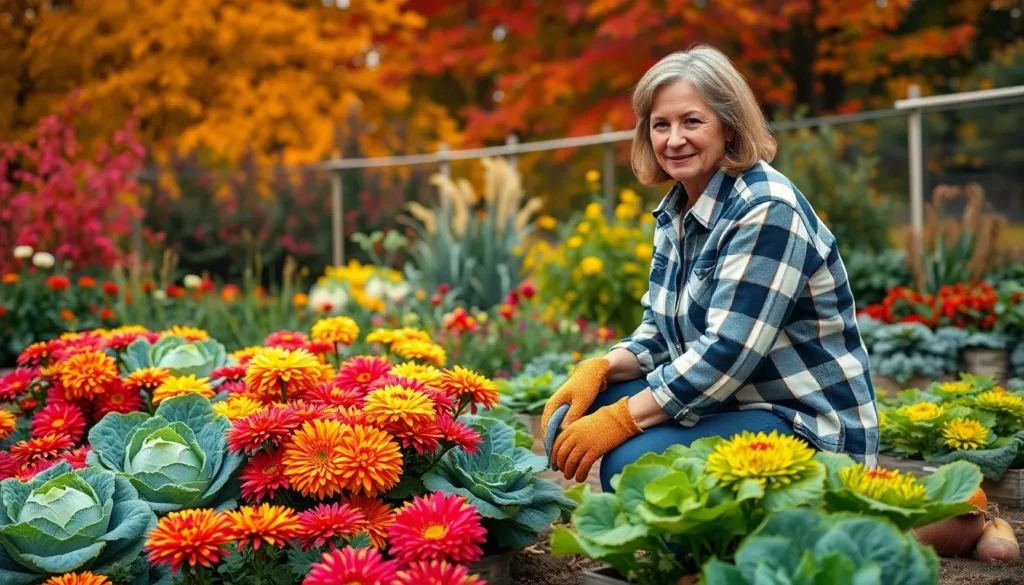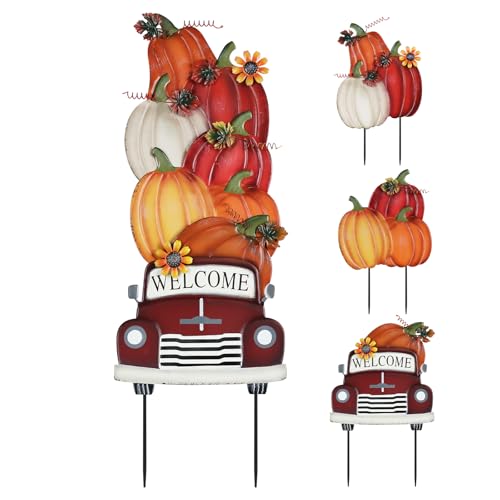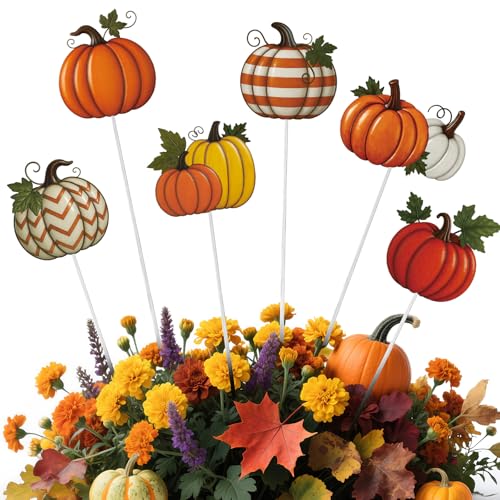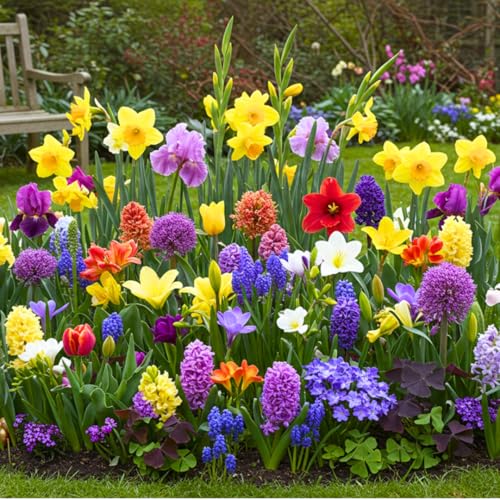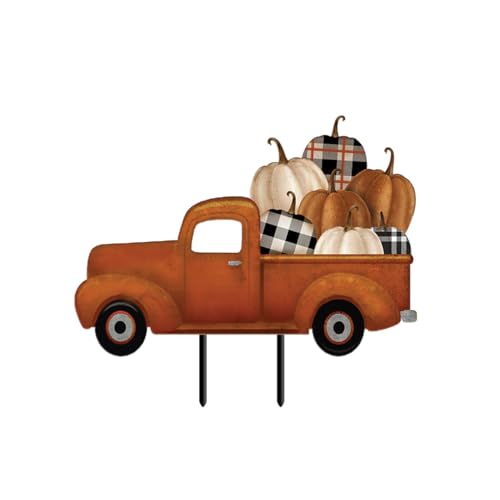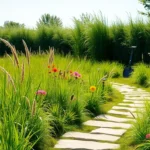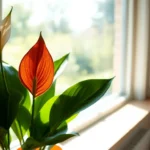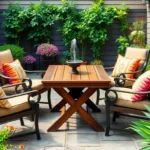As autumn’s crisp air settles in and summer’s blooms begin to fade, we’re often tempted to retreat indoors and call it quits on our gardens. But fall presents one of the most rewarding opportunities to transform our outdoor spaces into vibrant seasonal showcases that’ll carry us through the cooler months ahead.
Fall gardening isn’t just about cleanup and preparation for winter – it’s about embracing a whole new palette of colors textures and possibilities. We can plant cool-season vegetables that thrive in autumn temperatures create stunning displays with seasonal flowers and establish perennials that’ll give us a head start come spring.
Whether you’re looking to extend your growing season add visual interest to your industry or simply make the most of autumn’s unique growing conditions we’ve gathered proven strategies that’ll help you create a fall garden that’s both beautiful and productive. Let’s explore how to turn this transitional season into your garden’s most spectacular chapter yet.
Plant Cool-Season Vegetables for a Bountiful Harvest
Cool-season vegetables offer gardeners the perfect opportunity to extend their growing season well into autumn and winter. These hardy crops actually prefer cooler temperatures and can withstand light frosts that would devastate summer vegetables.
Root Vegetables That Thrive in Cooler Weather
Carrots develop their sweetest flavor when grown in fall temperatures between 60-65°F. We recommend planting varieties like ‘Scarlet Nantes’ or ‘Danvers Half Long’ 10-12 weeks before your first hard frost. These orange beauties can stay in the ground until temperatures drop below 20°F.
Radishes mature quickly in cool weather, taking just 25-30 days from seed to harvest. Plant varieties such as ‘Cherry Belle’ or ‘French Breakfast’ every two weeks through early fall for continuous harvests. Their crisp texture and peppery bite intensify in cooler conditions.
Turnips produce both edible roots and nutritious greens in fall gardens. Varieties like ‘Purple Top White Globe’ handle temperatures down to 20°F and actually taste sweeter after experiencing light frosts. Plant them 8-10 weeks before your area’s first hard freeze.
Beets tolerate frost better than most vegetables and can survive temperatures as low as 15°F. We suggest growing ‘Detroit Dark Red’ or ‘Chioggia’ varieties for their cold hardiness and excellent storage qualities. Their earthy sweetness develops fully in autumn’s cooler soil.
Leafy Greens Perfect for Fall Growing
Spinach thrives in temperatures between 35-75°F and becomes more tender in cool weather. Plant varieties like ‘Space’ or ‘Bloomsdale Long Standing’ 6-8 weeks before your first frost date. These nutrient-dense leaves can withstand temperatures down to 15°F with proper protection.
Lettuce grows best when daytime temperatures stay below 70°F. We recommend cold-hardy varieties such as ‘Winter Density’ or ‘Arctic King’ for fall planting. These crisp greens maintain their quality longer in cool weather and won’t bolt like they do in summer heat.
Kale actually improves in flavor after experiencing frost, with temperatures below 32°F converting starches to sugars. Plant varieties like ‘Winterbor’ or ‘Red Russian’ 8-10 weeks before hard frost for tender, sweet leaves throughout winter.
Arugula grows rapidly in fall’s moderate temperatures and develops a milder flavor than summer-grown crops. This peppery green matures in just 40-50 days and can tolerate light frosts down to 25°F.
Brassicas That Improve with Frost
Brussels sprouts require cool weather to develop properly and taste best after experiencing several frosts. Plant transplants in late summer for harvest 90-100 days later when temperatures consistently stay below 50°F. Their nutty sweetness peaks after cold weather converts their starches to sugars.
Cabbage forms tight heads in cool weather and can withstand temperatures as low as 20°F. We suggest planting varieties like ‘January King’ or ‘Storage No. 4’ for fall harvest and winter storage. These hardy cabbages develop better flavor and texture in autumn’s crisp conditions.
Broccoli produces larger, more tender heads when grown in fall temperatures between 60-65°F. Plant varieties such as ‘Belstar’ or ‘Arcadia’ 12-14 weeks before your first hard frost for optimal head development. Cool weather prevents the bitter flavors that develop in summer heat.
Cauliflower requires consistent cool temperatures to form proper heads and benefits from light frost exposure. Plant cold-tolerant varieties like ‘Snow Crown’ or ‘Cheddar’ 10-12 weeks before hard freeze for sweet, compact heads that store well through winter.
Create Stunning Fall Color Displays with Seasonal Flowers
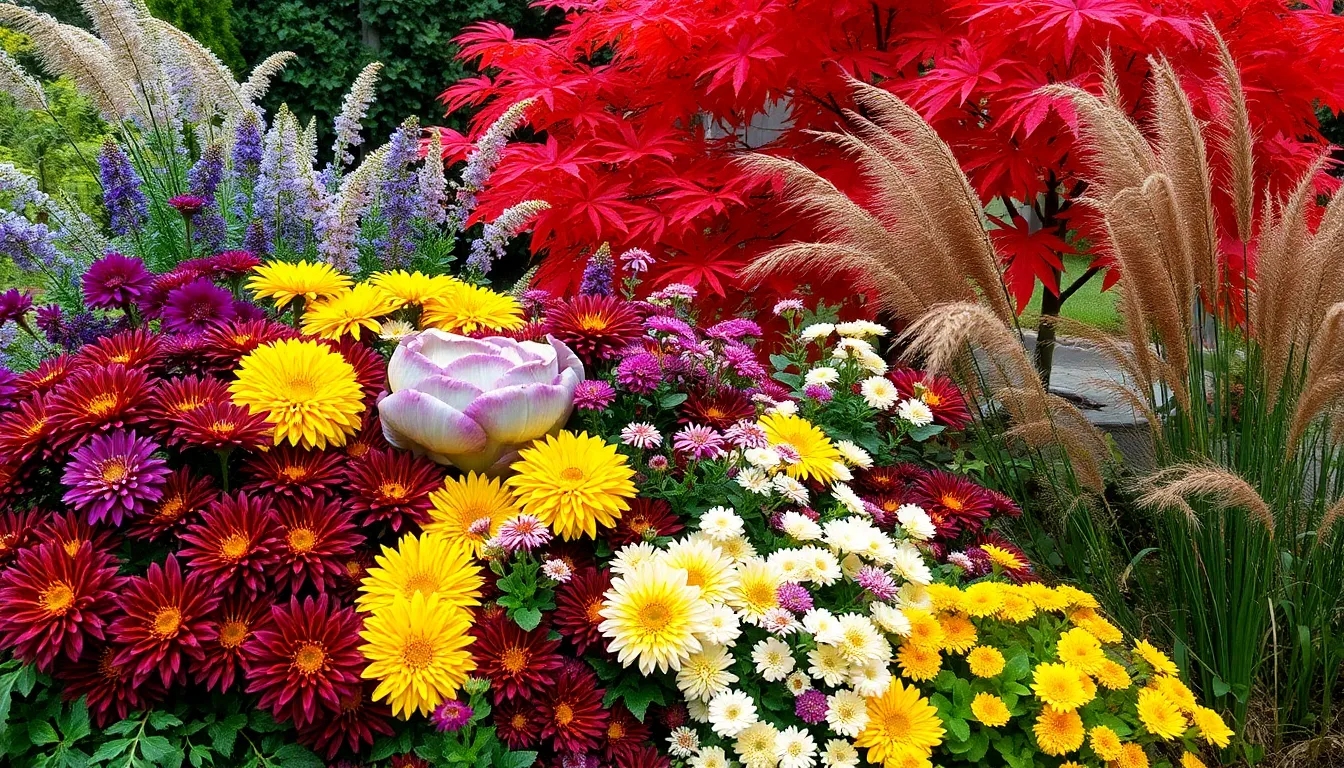
Building on our foundation of cool-season vegetables, we can transform our fall gardens into breathtaking displays with carefully chosen seasonal flowers. These colorful additions will extend the visual appeal of our outdoor spaces well into the cooler months.
Mums and Asters for Classic Autumn Beauty
Mums deliver the quintessential fall garden experience with their abundant blooms available in deep burgundy, golden yellow, russet orange, and rich purple. We can create stunning focal points by grouping different colored varieties together in large containers or planting them as borders along walkways. Asters complement mums perfectly by adding delicate, daisy-like flowers in shades of purple, pink, and white that bloom from late summer through frost.
Pairing these fall staples with evergreens creates dramatic contrast that highlights their vibrant colors. We recommend combining golden mums with dwarf globe blue spruce or purple asters with dark green juniper to achieve this striking effect. Both flowers thrive in cooler temperatures and actually improve in appearance as nights become chilly, making them ideal for extending our garden’s beauty.
Ornamental Cabbage and Kale Arrangements
Ornamental cabbage transforms ordinary fall displays into sophisticated arrangements with its ruffled leaves in shades of deep purple, creamy white, and soft pink. We can use these architectural plants as centerpieces in large containers or create dramatic borders that frame our garden beds. Ornamental kale offers similar benefits with its more textured, frilly foliage that adds movement and interest to static plantings.
Container arrangements featuring these ornamentals work exceptionally well on porches, patios, and entryways where we want maximum visual impact. We suggest combining purple ornamental cabbage with white pansies and trailing ivy for elegant autumn containers. These plants actually improve in color as temperatures drop, with their pigmentation becoming more intense and vibrant throughout the fall season.
Late-Blooming Perennials for Extended Color
Sedum varieties provide spectacular late-season interest with their succulent foliage that transitions from green to brilliant shades of red, orange, and gold as autumn progresses. We can plant these hardy perennials in masses for dramatic effect or use them as accents among other fall plants. Ornamental grasses add texture and movement with their graceful plumes and foliage that catches autumn light beautifully.
Japanese maples create stunning focal points with their delicate leaves that transform into brilliant reds, oranges, and yellows throughout the fall months. We recommend positioning these trees where they’ll be backlit by morning or evening sun to showcase their translucent foliage. Oak trees and other deciduous specimens contribute to the overall autumn palette by providing a backdrop of changing colors that frame our more intimate garden displays.
Prepare Your Garden Beds for Winter Success
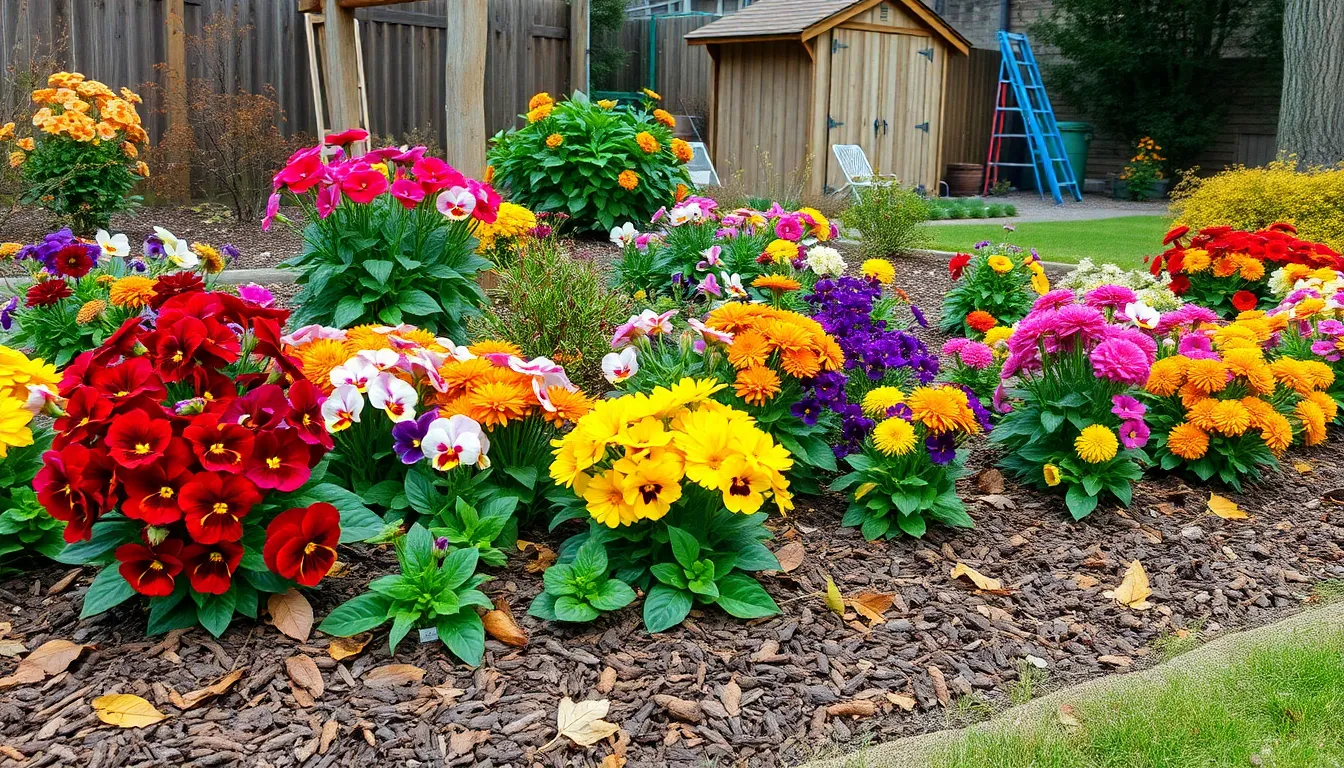
Setting up our fall gardens for winter success requires strategic preparation that protects plants and enriches soil for next year’s growing season. We’ll focus on three essential techniques that ensure our gardens emerge stronger after winter’s challenges.
Mulching Techniques to Protect Plants
Apply organic mulch layers to shield plants from freezing temperatures while retaining crucial soil moisture throughout winter months. We recommend spreading a 2-4 inch layer around perennials, trees, and shrubs to create an insulating barrier that moderates temperature fluctuations.
Select appropriate mulching materials based on your garden’s exact needs and aesthetic preferences. Straw works excellently for vegetable beds, wood chips provide long-lasting coverage for pathways, and shredded leaves offer cost-effective protection for flower borders.
Block weed growth effectively by ensuring mulch coverage extends beyond plant drip lines, preventing sunlight from reaching dormant weed seeds. This technique reduces spring maintenance while conserving soil nutrients for desired plants rather than competing weeds.
Soil Amendment and Composting Strategies
Incorporate homemade compost into garden beds to improve soil structure and boost fertility before winter dormancy begins. We suggest adding 2-3 inches of finished compost around existing plants and working it gently into the top soil layer.
Enrich soil with organic matter like well-aged manure or purchased compost from garden centers to support beneficial microbial activity. This addition creates a thriving soil network that breaks down nutrients slowly, making them available when plants resume growth.
Apply organic fertilizers strategically before the first hard frost to nourish soil microorganisms and provide slow-release nutrients. Bone meal, kelp meal, or balanced organic blends work well for most garden situations without causing excessive nitrogen that could stimulate late-season growth.
Pruning and Cleanup Best Practices
Evaluate garden performance from the summer season while removing diseased or pest-infested plant material that could harbor problems over winter. We leave healthy plant debris in some areas to provide wildlife habitat and natural composting opportunities.
Prune and divide perennials that have become overcrowded or show declining vigor to promote healthier growth next season. This timing allows plants to establish new root systems before winter while reducing competition for nutrients and space.
Replace spent annual flowers with fall-friendly options like pansies, chrysanthemums, or ornamental flowering kale to maintain garden interest throughout autumn months. These hardy plants often survive light frosts and provide color when most other flowers have finished blooming.
Clean and store garden tools properly to prevent rust and damage during winter storage, ensuring they’re ready for spring gardening tasks. Oil metal surfaces, sharpen blades, and store tools in dry locations to extend their useful life.
Design Eye-Catching Fall Container Gardens
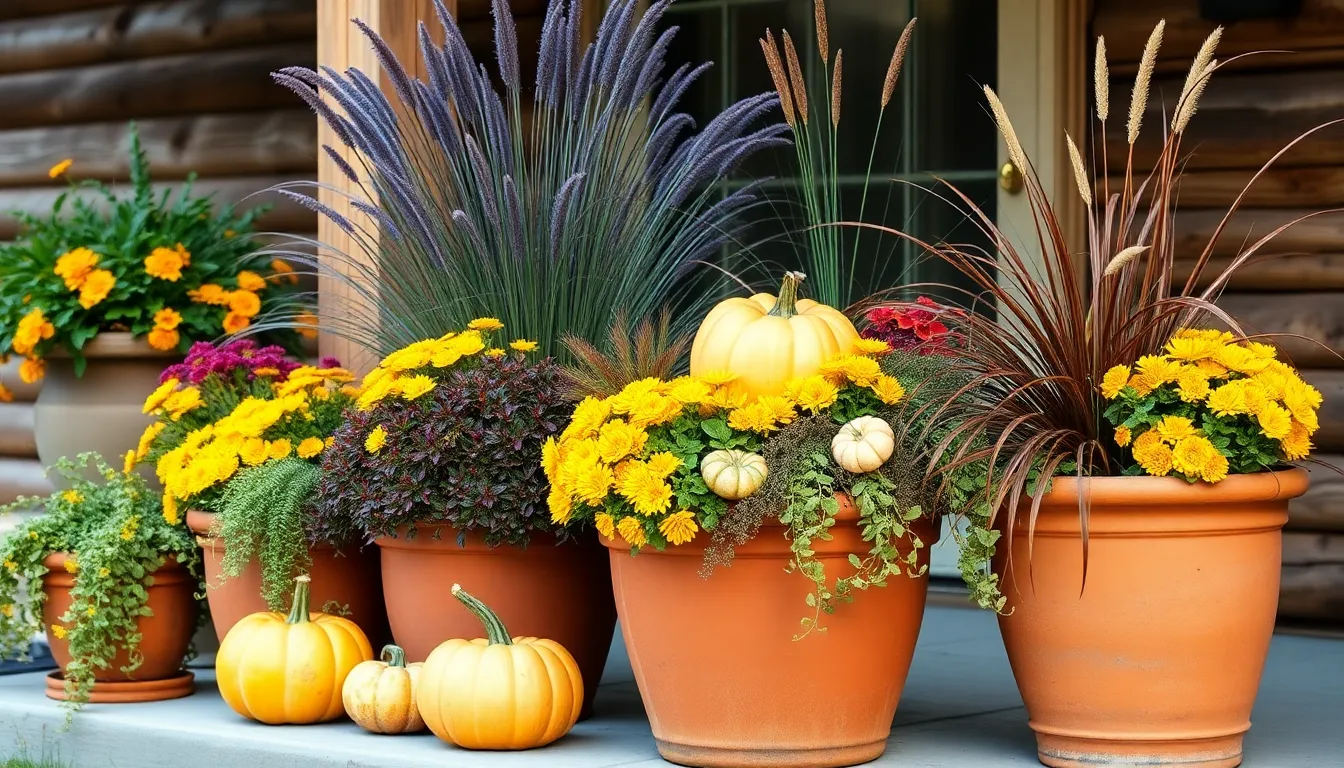
Container gardens offer endless possibilities for showcasing autumn’s vibrant colors and textures throughout the season. We’ll help you create stunning displays that capture the essence of fall while maximizing visual impact.
Selecting the Right Containers and Drainage
Proper drainage stands as the foundation of successful fall container gardening since waterlogged soil can quickly destroy your carefully planned displays. Terracotta pots remain our top recommendation due to their natural drainage properties and classic appearance that complements autumn aesthetics. Choose containers with drainage holes at the bottom to prevent water from accumulating around plant roots.
Variety in container sizes and shapes adds visual interest to your overall display. Mix large urns with medium planters and small decorative pots to create layered arrangements that draw the eye naturally across your space. Consider the mature size of your plants when selecting containers to ensure adequate root space for healthy growth throughout the fall season.
Combining Textures and Heights for Visual Appeal
The “filler, thriller, spiller” method creates professional-looking arrangements that showcase each plant’s unique characteristics. Filler plants like Loropetalum serve as the main foundation that fills your container with substantial foliage and structure. These primary plants establish the base color and texture for your entire arrangement.
Thriller elements add dramatic height and focal points to your containers. Purple Fountain Grass creates stunning vertical interest while Muhly Grass provides airy texture that moves gracefully in autumn breezes. Decorative sticks or tall ornamental elements can substitute for plants when you want architectural interest without additional plant care.
Spiller plants complete your arrangement by cascading over container edges for a natural, abundant look. Acorus grass offers contrasting foliage that pairs beautifully with upright grasses, while maroon-leaved coral bells provide rich color that intensifies as temperatures drop. Mexican feather grass works well as a low-growing spiller element that adds movement and softness to your displays.
Adding Seasonal Elements Like Gourds and Pumpkins
Gourds and pumpkins instantly transform ordinary container gardens into festive fall celebrations. These seasonal elements add pops of orange, yellow, and cream colors that perfectly complement autumn plantings. Position smaller gourds around the base of your containers or nestle them between plants for natural integration.
Yellow and Orange Mums pair beautifully with pumpkin displays while Celosia adds textural contrast with its unique flower forms. Ornamental peppers contribute mid-size points of interest with their colorful fruits that persist well into the season. Flowering kale and ornamental kale provide sophisticated color combinations that intensify as cooler weather arrives.
Pansies offer cheerful faces that brighten container arrangements throughout fall’s shorter days. These hardy flowers continue blooming even after light frosts, extending your container garden’s appeal well into winter months. Combine different pumpkin sizes and gourd varieties to create natural-looking seasonal vignettes that celebrate autumn’s abundance.
Plant Spring-Blooming Bulbs for Next Year’s Garden

While we’re busy preparing our fall gardens with seasonal flowers and vegetables, we shouldn’t overlook the opportunity to plant spring-blooming bulbs now. These bulbs require the cold winter months to develop properly and reward us with spectacular early season color when our gardens need it most.
Timing Your Bulb Planting for Optimal Results
Plant spring-blooming bulbs when soil temperatures consistently remain below 60°F for optimal root development. We typically achieve this timing 6-8 weeks before the ground freezes hard in our region. The bulbs need this extended cold period to trigger their blooming process come spring.
Check your local garden calendar for exact planting dates exact to your growing zone. Most areas see ideal planting windows between October and December, depending on geographic location. Early November generally provides the sweet spot for most temperate regions.
Soil preparation becomes crucial during this timeframe. We recommend working compost into planting areas to improve drainage, since waterlogged conditions can cause bulb rot during winter months. Well-draining soil prevents moisture problems that commonly affect spring bulbs.
Choosing Bulbs That Naturalize Well
Select tulips and daffodils as your primary naturalizing bulbs for reliable yearly returns. These varieties establish strong root systems and multiply naturally over time without requiring annual replanting. Daffodils particularly excel at naturalizing since deer and rodents typically avoid them.
Consider crocus and grape hyacinth for early spring interest that spreads reliably. We’ve found these smaller bulbs create stunning carpet effects when planted in large quantities. They’ll gradually expand their coverage area through natural reproduction.
Avoid hybrid tulips if you want long-term naturalization success. Species tulips and Darwin hybrids typically perform better for perennial gardens since they maintain vigor through multiple growing seasons. These varieties adapt better to varying soil conditions and weather patterns.
Layering Techniques for Extended Bloom Times
Create succession blooms by planting bulbs at different depths in the same garden area. We recommend placing larger bulbs like tulips 6-8 inches deep, while positioning smaller crocus and snowdrops at 3-4 inch depths. This technique produces blooms from early spring through late spring.
Combine early, mid, and late season varieties for continuous color throughout spring months. Plant February blooming crocus alongside March flowering daffodils and April blooming tulips. This strategic planning ensures our gardens maintain interest for extended periods.
Group different bulb types in overlapping clusters rather than separate sections. We’ve discovered that mixing varieties creates more natural looking displays while maximizing visual impact. Position taller tulips behind shorter daffodils to create layered height arrangements that showcase each variety effectively.
Extend Your Growing Season with Protective Measures

We can dramatically extend our fall gardening season by implementing smart protective measures that shield plants from early frost and harsh weather conditions. These techniques allow us to continue harvesting fresh produce well beyond typical outdoor growing limits.
Cold Frames and Row Covers for Temperature Control
Cold frames function as miniature greenhouses by trapping solar heat during the day and slowly releasing it throughout the night. These bottomless boxes with clear covers provide permanent protection for winter growing and seedling development. We’ll find cold frames particularly effective for maintaining consistent temperatures around our most sensitive plants during extended cold periods.
Row covers offer flexible frost protection that ranges from 2°F to 10°F depending on the fabric weight we choose. Lightweight fabrics work well for moderate temperature drops while heavyweight options protect against severe frost conditions. Installing these covers is straightforward since we can drape them directly over plants or support them with simple hoops.
| Protection Method | Temperature Protection | Installation | Best Applications |
|---|---|---|---|
| Cold Frame | 5°F-15°F boost | Semi-permanent | Winter growing, seedlings |
| Lightweight Row Cover | 2°F-4°F protection | Very easy | Spring/fall frost, pests |
| Heavyweight Row Cover | 6°F-10°F protection | Easy | Severe frost conditions |
Greenhouse and Hoop House Setup
Greenhouses provide comprehensive climate control for serious gardeners who want year-round growing capabilities. These structures use clear polycarbonate panels or glass to maximize light transmission while maintaining optimal temperatures. We can regulate humidity levels and protect plants from all weather extremes within these controlled environments.
Hoop houses offer an affordable alternative that balances protection with construction simplicity. Polytunnels constructed with clear plastic sheeting over metal or PVC hoops create effective growing spaces without permanent installation requirements. These structures trap heat efficiently while allowing easy access for maintenance and harvesting activities.
Both options extend our growing season significantly by creating microclimates that remain several degrees warmer than outdoor conditions. We’ll achieve the best results by positioning these structures to maximize southern exposure and minimize cold wind exposure.
Indoor Growing Options for Herbs and Greens
Indoor cultivation allows us to harvest fresh herbs and leafy greens throughout the entire fall and winter season. Sunny windowsills provide adequate light for herbs like basil, parsley, and chives without additional equipment costs. We can supplement natural light with LED grow lights to support larger indoor gardens and ensure consistent plant growth.
Starting seeds indoors before transplanting to protected outdoor spaces extends our production window even further. This technique works particularly well for lettuce, spinach, and other cool-season greens that we want to harvest continuously. We’ll maximize our indoor growing success by choosing compact varieties specifically bred for container cultivation.
Hydroponic systems offer advanced indoor growing answers that produce faster growth rates and higher yields than traditional soil methods. These soilless systems work exceptionally well for leafy greens and herbs in kitchen environments where we want immediate access to fresh ingredients.
Harvest and Preserve Your Summer Garden’s Bounty

Maximizing our fall garden’s potential means knowing exactly when and how to harvest our summer crops for optimal flavor and storage life. Proper timing and technique can extend our harvest well into the cooler months.
Proper Harvesting Techniques for Maximum Yield
Timing becomes crucial when we’re harvesting cool-season crops just before frost hits our gardens. Cool weather actually improves the flavor and texture of many vegetables, so we shouldn’t rush to harvest everything at the first sign of dropping temperatures.
Leafy greens like arugula reach baby leaf size in just 21 days or mature leaves in 40 days, giving us flexibility in our harvest timing. Scissors work best for cutting these delicate greens, allowing us to harvest outer leaves while encouraging continued growth from the center.
Root vegetables require a gentler approach when we’re ready to harvest. Carrots, beets, and radishes should be pulled carefully from loosened soil to avoid breaking the roots. Beet greens offer us a bonus harvest – we can pick young leaves throughout the growing season without harming root development.
Bush beans need about 60 days to mature, and we should harvest pods regularly to encourage continued production. Early cold snaps might require protection, but consistent picking keeps plants producing until hard frost arrives.
Storage Methods for Root Vegetables and Squash
Root vegetables store best when we provide them with cool, dark conditions that mimic their natural underground environment. Temperature consistency matters more than achieving the perfect temperature, so we should find the coolest, most stable location in our homes.
Proper storage locations include unheated basements, root cellars, or even refrigerator crisper drawers for smaller quantities. Root vegetables like carrots and beets maintain freshness for months when stored in slightly damp sand or peat moss.
Squash storage requires a different approach since these vegetables prefer dry, cool areas with good air circulation. We should cure winter squash in the sun for 7-10 days after harvest, then store them on shelves or in bins where air can circulate freely around each fruit.
Storage containers can include wooden crates, mesh bags, or perforated plastic bags that allow airflow while maintaining humidity. We should check stored vegetables regularly and remove any that show signs of decay to prevent spoilage from spreading.
Preserving Herbs and Late-Season Produce
Fresh herbs from our fall gardens can be preserved using several methods that maintain their flavor and nutritional value through winter months. Basil and oregano respond particularly well to both freezing and drying techniques.
Freezing herbs works best when we chop fresh leaves and pack them into ice cube trays with water or olive oil. This method preserves the herbs’ bright flavors and makes them easy to add to soups and stews throughout winter.
Drying techniques include hanging herb bundles in a warm, dry location with good air circulation. We can also use a food dehydrator or low-temperature oven to speed the process while maintaining essential oils.
Canning and pickling extend the life of late-season produce like tomatoes, peppers, and cucumbers. Water bath canning works for high-acid foods, while pressure canning safely preserves low-acid vegetables for long-term storage.
Fermentation offers another preservation method that actually increases the nutritional value of vegetables like cabbage and carrots. Simple salt brines create the anaerobic environment needed for beneficial bacteria to transform fresh vegetables into probiotic-rich foods.
Conclusion
Fall gardening opens up a industry of possibilities that many gardeners overlook. We’ve explored how cool-season vegetables can extend our harvest well into winter while seasonal flowers create stunning autumn displays that rival any spring garden.
The key to fall gardening success lies in proper planning and preparation. By implementing the strategies we’ve covered – from soil preparation and mulching to protective measures and container gardening – we can create outdoor spaces that remain vibrant throughout the cooler months.
Remember that fall isn’t just about winding down our gardens. It’s about setting the foundation for next year’s success through spring bulb planting soil enrichment and proper preservation of our summer harvest. With these techniques in our gardening toolkit we can enjoy productive beautiful gardens year-round while maximizing every season’s unique potential.
Frequently Asked Questions
What vegetables can I plant in my fall garden?
Cool-season vegetables thrive in fall gardens, including root vegetables like carrots, radishes, turnips, and beets. Leafy greens such as spinach, lettuce, kale, and arugula also perform well in cooler temperatures. Brassicas like Brussels sprouts, cabbage, broccoli, and cauliflower actually improve in flavor when exposed to frost, making them perfect fall crops.
When should I plant spring-blooming bulbs?
Plant spring-blooming bulbs when soil temperatures are consistently below 60°F, typically 6-8 weeks before the ground freezes. This timing allows bulbs to develop properly during cold winter months. Check your local garden calendar for optimal planting dates in your area, as timing varies by location.
How do I create attractive fall container gardens?
Use the “filler, thriller, spiller” method by combining plants of different heights and textures. Choose containers with proper drainage, preferably terracotta pots for aesthetic appeal. Include seasonal elements like gourds and pumpkins, and add hardy flowers like pansies to extend visual interest into winter months.
What flowers bloom best in fall gardens?
Classic autumn blooms include mums and asters, which provide rich colors well into cooler months. Group mums for dramatic effect and pair asters with evergreens for contrast. Ornamental cabbage and kale create sophisticated arrangements, while late-blooming perennials like sedum and ornamental grasses add spectacular late-season interest.
How should I prepare my garden beds for winter?
Apply organic mulch to shield plants from freezing and retain soil moisture. Incorporate homemade compost to improve soil structure and fertility. Implement proper pruning and cleanup practices to promote healthier growth. Consider adding well-aged manure and organic fertilizers to support beneficial microbial activity in the soil.
What protective measures can extend my fall growing season?
Use cold frames as miniature greenhouses and row covers for flexible frost protection. Consider installing hoop houses or greenhouses to create microclimates that keep plants warmer than outdoor conditions. For herbs and greens, utilize sunny windowsills or hydroponic systems for indoor growing throughout winter.
When and how should I harvest fall vegetables?
Harvest timing depends on the specific crop, but most fall vegetables can withstand light frosts and often improve in flavor after exposure to cold. Root vegetables can stay in the ground longer, while leafy greens should be harvested before hard freezes. Use proper techniques to maximize flavor and storage life.
How can I preserve my fall harvest?
Store root vegetables and squash in cool, dark conditions with proper air circulation. Preserve herbs and late-season produce through freezing, drying, canning, or fermentation. These methods maintain flavor and nutritional value throughout winter months, allowing you to enjoy your garden’s bounty year-round.

